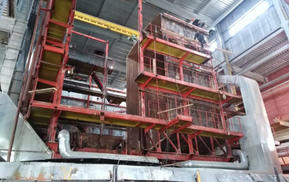Gas-oil fire chambers are intended for combustion of gas and black oil. Capital investments for the construction of power plants operating on gas and fuel oil are 20–25% less than those on solid fuels; The efficiency of steam boilers is 1–3% higher; less electricity consumption for own needs; no ash emissions; full automation is possible; better working conditions for staff.
Oil burners with independent air supply can be used on gas furnaces for burning reserve fuel – fuel oil. In this case, separate combustion greatly complicates the system of air ducts with controls that must be connected to two types of burners for burning natural gas and fuel oil. This also complicates the operation and automation of the boiler. When operating on one of these two fuels, air must be supplied to cool off burners. This amount of air cannot be used efficiently, which leads to an increase in excess air and, consequently, to a decrease in efficiency. Combined burners with a single air duct system, which are widely used, are deprived of these shortcomings.
Gas-oil furnaces are made in the form of a parallelepiped with a hearth in the lower part. All walls and floors are tightly shielded, i.e. covered with a pipe system in which water circulates. On boilers with natural circulation, the hearth is inclined, and on boilers with forced circulation, the hearth can also be horizontal.

